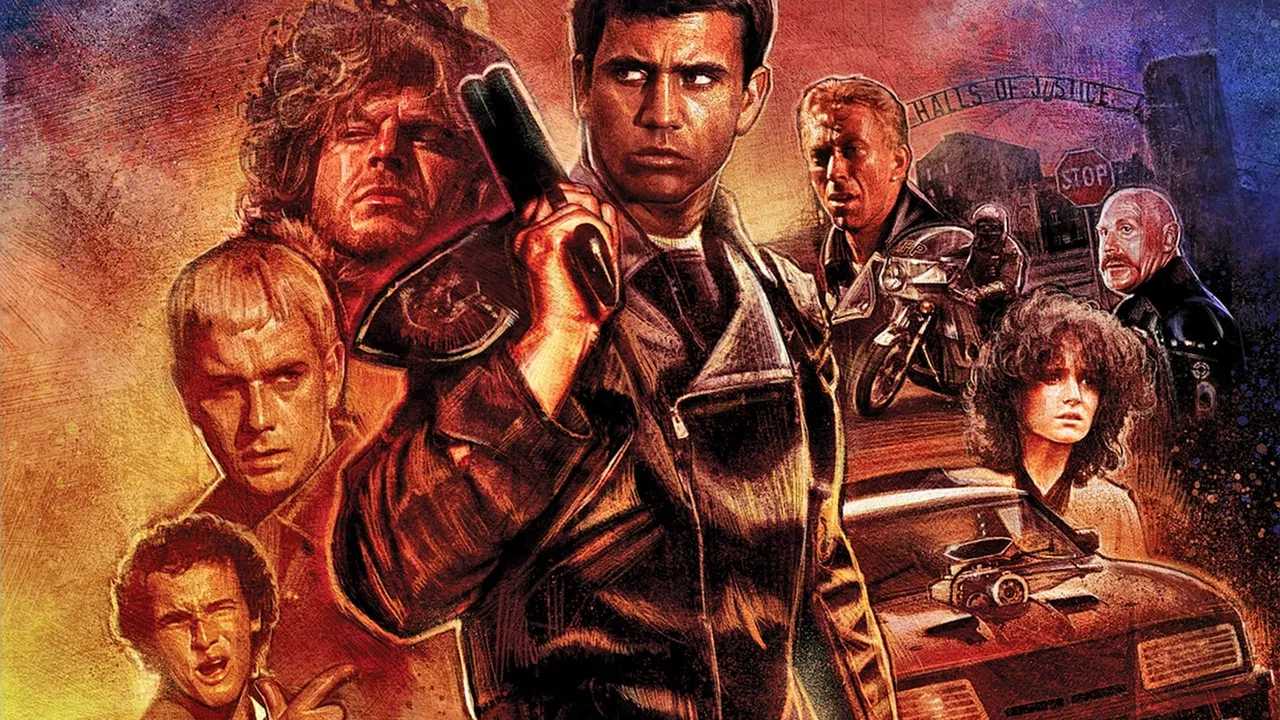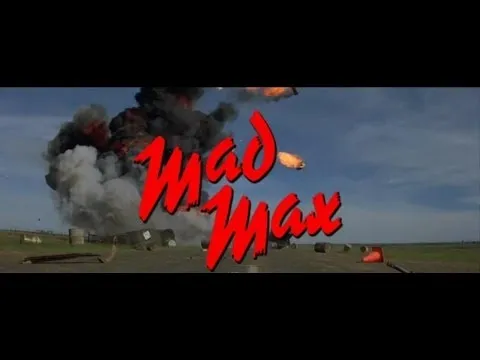
Most people would agree with Wes Craven's saying that "sequels suck", yet there are some notable exceptions to the rule. One of such exception is Mad Max 2 a.k.a. The Road Warrior, one of the most successful and influential movies of the last decade. So, the logical question arises: if the sequel is so revered, is the original also good or even better? Answer to that question lies in Mad Max, Australian 1979 action movie that launched the careers of director George Miller and today's Hollywood megastar Mel Gibson, as well as a commercial boom of Australian cinema in 1980s.
Although the opening title puts the plot of this movie in the near future, on the surface the world looks pretty same as today's. The only difference is in decline of the public services, including law enforcement, that opened way to psychopathic biker gangs to make the roads and countryside their undisputed realm. The small, yet dedicated police force is using their powerful, and in the same time obsolete, machines in a losing battle to prevent the law and civilisation from becoming distant memory. The best among them is Max Rokatansky (Mel Gibson), supreme killing machine on the road, whose skills are again proven in a deadly confrontation that leaves escaped cop-killing biker Nightrider (Vince Gill) dead. However, Max is in a same time dedicated family man, and after seeing too many of his colleagues hurt or killed in a futile struggle, he contemplates quitting and takes his wife and son to the vacation. Unfortunately, the bikers led by Toecutter (played by Hugh Keays-Byrne) had already marked Max as a target because of Nightrider's death and they kill his family in the process. Having nothing else to live for, Max returns to the road, but this time not as policeman, but avenging maniac, using all of his abilities to track and kill bikers, even in the vast areas abandoned by legal authority.
In many ways, plot of Mad Max looks like a combination of vigilante cop thriller and B-western. Many also argued that mild futuristic motives serve only as an excuse for hour and half of brutal non-stop violence. On the other hand, even those critics that question movie's originality praise Miller for the talent he showed in his great cinematic debut. Mad Max was made on a ridiculously small budget (being edited by Miller himself, in his own bedroom), yet it didn't look cheap. On the contrary, some of the stunts and action scenes are spectacular and breathtaking. Small budget also worked into the movie's advantage; being forced to use second-hand equipment as props, Miller painted the picture of industrial decay in order to illustrate the declining state of future civilisation.
Miller's visions of near future, that would be even more developed in next two Mad Max films, have been actually inspired by current events. The great fuel crisis of 1973 suddenly showed great, and until than unthinkable, vulnerability of Western civilisation. The loss of faith in progress and technology coincided with the great moral void, left by the breakdown of traditional social values in the 1960s. Miller, and many like him, feared that the fall of industrial institutions would lead to anarchy and new barbarism, because society wouldn't be able to protect individual, now forced to live without any moral compass. Such ideas were already explored in Jeremiah, cult comic book by French artist Hermann, whose influence, together with Mad Max movies, would later incite whole sub-genre of post-apocalyptic movies. Anyway, original Mad Max fell in line with a whole series of dark, dystopian science fiction movies that were very popular in late 1970s and early 1980s.
Apart from dark tone that corresponded with pessimistic feel of the time, Mad Max succeeded also because it was good movie. Mel Gibson was well-cast in the role of at least nominally civilised policeman that later turns into homicidal maniac, not very different than those he tried to stop. Gibson very effectively portrays his gradual slide into madness, and such experience would later serve him very well in his later role as Martin Riggs in Lethal Weapon. Other actors were also good and gave a lot to well drawn and strong characters, like psychotic Nightrider, evil Toecutter, cool yet dealy Bubba Zanetti (played by Geoff Parry) or stoned Johnny the Boy (played by Tim Burns) that would stick long in our memory, despite their relatively short appearance in this relatively short film. Sadly, among them, only Steve Bisley, who plays Max's larger than-life friend and colleague Jim Goose, got some name recognition in later years. Character of Jesse, Max's wife, was somwhat undeveloped and the family scenes seemed a little bit stereotyped, with the cheerfulness and sentimentalism that is unnecessary contrast towards the dark and pessimistic tone of the whole picture. Brian May's score, on the other hand, was good, yet not as powerful as some other science fiction soundtrack of that era. But, on the whole, Mad Max, despite being slightly inferior to its more influential sequel, is still very effective piece of cinema, that can entertain us despite forcing us to think about some unpleasant topics.
RATING: 8/10 (+++)
(Note: The text in its original form was posted in Usenet newsgroup rec.arts.movies.reviews on October 19th 1998)
==
Blog in Croatian https://draxblog.com
Blog in English https://draxreview.wordpress.com/
Cent profile https://beta.cent.co/@drax
Minds profile https://www.minds.com/drax_rp_nc
Brave browser: https://brave.com/dra011
BTC donations: 1EWxiMiP6iiG9rger3NuUSd6HByaxQWafG
ETH donations: 0xB305F144323b99e6f8b1d66f5D7DE78B498C32A7

